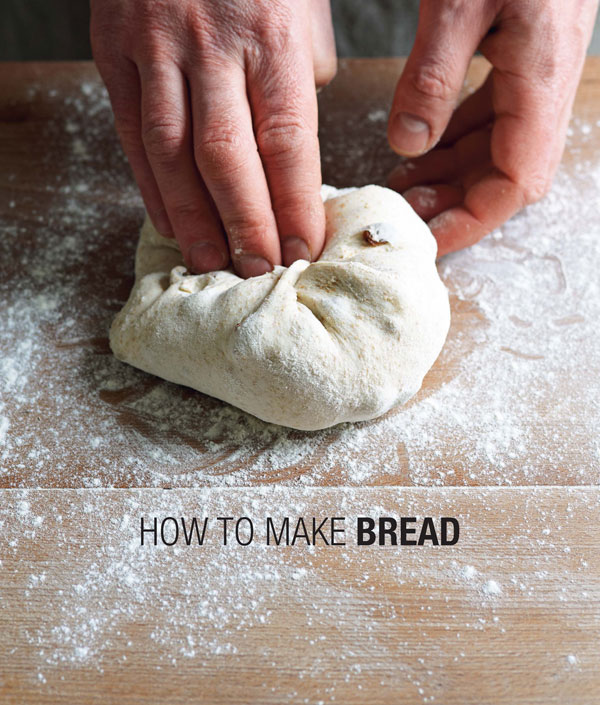
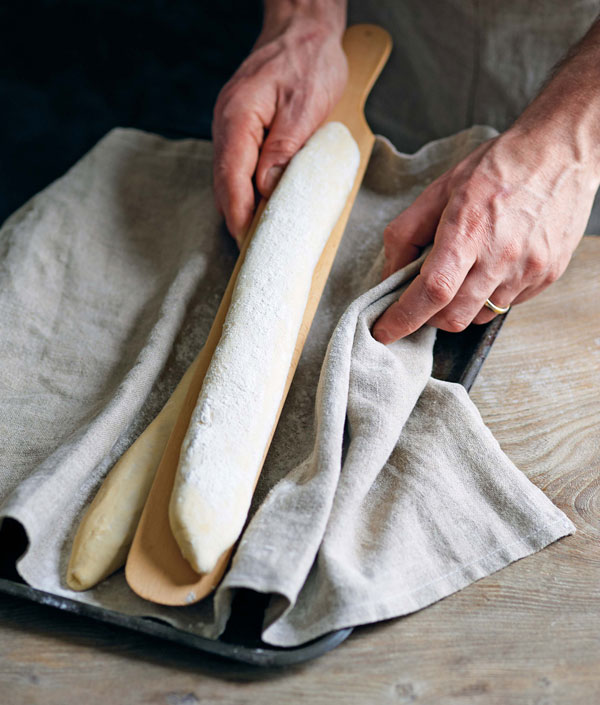
 LONDON NEW YORK
LONDON NEW YORK
| HOW TO MAKE | BREAD |
| Step-by-step recipes for yeasted breads, sourdoughs, soda breads and pastries |
EMMANUEL HADJIANDREOU photography by Steve Painter DEDICATION For my supportive and loving wife Lisa, my gorgeous boy Noah Elliot and my mum, Elena, who has guided me through my life. Design, Photographic Art Direction and Prop Styling Steve Painter Senior Editor Cline Hughes Production Controller Toby Marshall Art Director Leslie Harrington Publishing Director Alison Starling US Recipe Tester Susan Stuck Indexer Hilary Bird First published in 2011 by Ryland Peters & Small 2021 Jockeys Fields London WC1R 4BW and 519 Broadway, 5th Floor New York, NY 10012 www.rylandpeters.com 10 9 8 7 6 5 4 3 2 1 Text Emmanuel Hadjiandreou 2011 Design and photographs Ryland Peters & Small 2011 The authors moral rights have been asserted. All rights reserved. No part of this publication may be reproduced, stored in a retrieval system or transmitted in any form or by any means, electronic, mechanical, photocopying or otherwise, without the prior permission of the publisher. eISBN 978-1-84945-320-3 ISBN 978-1-84975-140-7 A catalogue record for this book is available from the British Library. Library of Congress Cataloging-in-Publication Data Hadjiandreou, Emmanuel.
How to make bread : step-by-step recipes for yeasted breads, sourdoughs, soda breads and pastries / Emmanuel Hadjiandreou ; photography by Steve Painter. p. cm. Includes index. ISBN 978-1-84975-140-7 1. 2. Cookbooks. I. Title. Title.
TX769.H225 2011 641.815dc23 2011025873 Printed and bound in China Notes All spoon measurements are level, unless otherwise specified. Ovens should be preheated to the specified temperature. Recipes in this book were tested using a fan/convection oven. If using a regular oven, follow the manufacturers instructions for adjusting temperatures. All eggs are medium, unless otherwise specified.
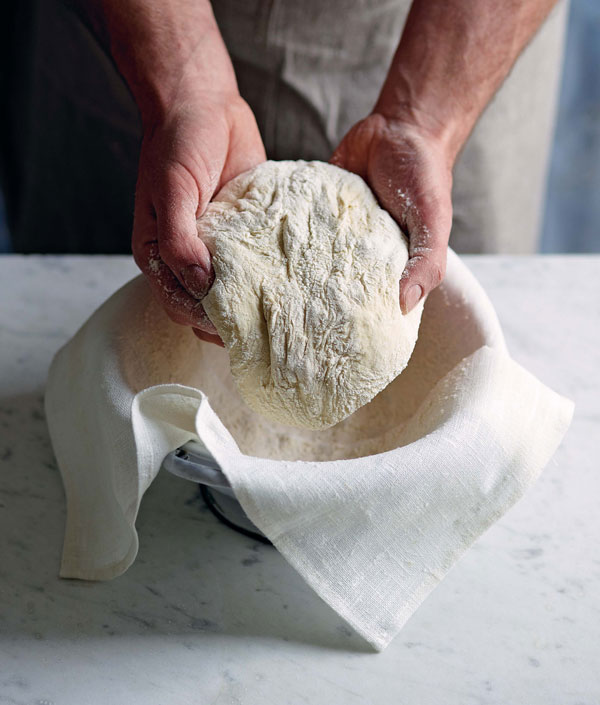
Ever since I can remember, baking has been an important part of my life.

Ever since I can remember, baking has been an important part of my life.
There was a great food influence in my life with my father owning and running restaurants with his brother while I was young. This allowed me to be introduced to new and exciting flavours and has helped me to be innovative in my baking now. Bread is special from the moment you start mixing the ingredients to the time when you take it out of the oven, tap it on the bottom to check for a hollow sound and then that unmistakable smell that overwhelms you as the baked bread cools. It is quite magical. I have never tired of making bread. No matter how many loaves I have had to produce or what the challenge has been, I have jumped in with my heart and soul and created each and every loaf with the same amount of passion I would put into creating only one.
After gaining my apprenticeship and qualifications in German-style bakeries in South Africa and Namibia, I worked and travelled with my wife Lisa, building and learning new techniques and recipes in Greece and Germany. I was taught to produce large quantities of bread as well as individual showpieces without sacrificing quality or consistency. On arriving in the UK, my baking world exploded! I met and worked with incredibly passionate and like-minded artisans. My hunger for learning, developing and creating new loaves took over. I was very fortunate to be able to use the best organic and natural ingredients available and to work in the most wonderful environments. Through my years of baking and running bakeries, I have had enormous pleasure in introducing apprentices and young bakers to my world of bread and inspiring them to become successful, enthusiastic and knowledgeable bakers.
Through teaching, which is what I mostly do now, I get as much joy in seeing my students learn how to achieve a great loaf as I do with baking it myself. This book is an accumulation of the recipes I have developed through my baking life, so they have been thoroughly tried, tested and enjoyed. My ultimate goal has always been to make bread with a deep, satisfying flavour and a good crust. From the basic recipes to the more exciting and interesting sourdough processes, this book will guide you on your baking adventure. I believe that everyone can make a loaf of bread, and with practice, it can be great bread. Flour can be made from different grains.
Most of the flour used in this book is made from wheat or rye. Each grain of wheat contains three main elements: bran, endosperm and germ. The way in which the wheat is milled determines which parts of the grain remain in the flour, and which are lost. There are two ways of making flour from wheat. 1 Stoneground flour is obtained by crushing the wheat between two millstones. The resulting flour is considered wholemeal or whole-wheat and generally retains all three parts of the grain.
When this flour is sifted and therefore refined, white flour is obtained. It is normally grey because there are trace elements of bran that cant be removed. 2 Roller-milled flour is made using a series of metal rollers that crush the grain to a powder. Roller-milled flour is generally broken down into its different parts, then put back together. White flour is normally roller milled. If you buy a bag of wheat flour, unless it is specifically labelled stoneground, it has been roller milled.
Wholemeal/whole-wheat flour contains 100% of the original grain and therefore nothing has been destroyed or lost during milling. When flour and water are mixed, the starch in the flour absorbs the water and, as a result, some of the starch is converted to sugar. Yeast feeds off the sugar and produces carbon dioxide. The combination of flour, water and kneading helps to create gluten, which is responsible for the elasticity of bread dough. Gluten traps carbon dioxide thereby ensuring that the bread rises and creates the little bubbles you see in a slice of baked bread. WHEAT FLOURS Many varieties of wheat are grown and a miller will blend different varieties to make different types of white flour.
For example, plain white or all-purpose flour has a medium protein (and therefore gluten) content about 10%. It contains 75% of the original grain, which means that most of the bran and germ have been removed. It is mainly used for baking cookies, pastries and some cakes. Cake flour or soft flour has an even lower protein content (about 8%) and a high starch content. For bread making, we require strong/bread flour. Strong or bread flour is specially blended by the miller for bread making and it contains a high amount of protein (up to 17%) to trap the carbon dioxide during fermentation and give the bread a good texture.
Look for organic or unbleached flour for the best results. Other grades of flour include brown and white wholemeal/whole-wheat. In the UK, malthouse or Granary-style flour is a brown flour containing malted grain. Malting is a process whereby a grain is allowed to start germinating during which starch is converted to sugar and then roasted. The malted grain is either added whole to flour or it is ground first and mixed into the flour. The resulting bread is sweeter and nuttier than other breads.
Next page
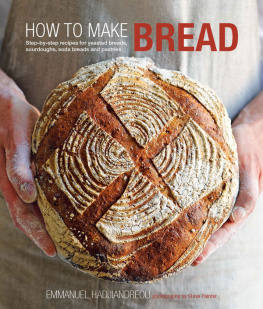


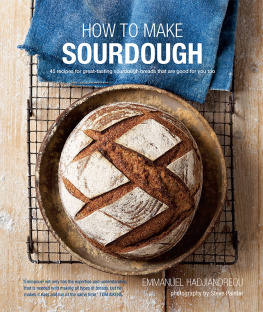

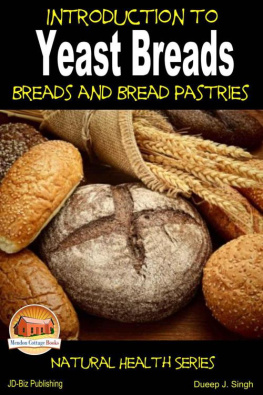

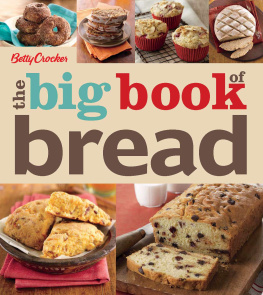


 LONDON NEW YORK
LONDON NEW YORK Ever since I can remember, baking has been an important part of my life.
Ever since I can remember, baking has been an important part of my life.